Main content starts here.
Foreign Languages > Chiba International Information Square - To foreign residents - > Chiba Nanohana News > Chiba Nanohana News (Past Issues) > Chiba Nanohana News (July 2023)
Chiba Nanohana News (July 2023)
Index
I. News II. Festivals and Events
I. News
1)Watch Out for Signs of Heatstroke
Heatstroke is the state in which the body’s balance of water and salt gradually becomes imbalanced due to prolonged exposure to high temperatures and humidity, causing heat buildup and the body’s thermoregulatory system to fail to function properly. It can occur not only when you are outdoors, but also when indoors and not doing any exercise or work. Heatstroke may result in emergency medical treatment and, in some cases, death.
In order to prevent health problems caused by heatstroke, it is important to have a correct understanding of what heatstroke is, take note of changes in your physical condition, and pay attention to your surroundings.
◆ Heat Index and Heat Stroke Alert
Heat Index (WBGT value)
The Heat Index (WBGT value) is an index calculated based on the temperature, humidity, and radiant heat. Reference values are set according to the level of exercise or work.
Observed values and predicted values are posted on the Ministry of the Environment’s website (Heatstroke Prevention Information Site).
Heatstroke Alert:
When the WBGT index is predicted to reach 33 or higher, a “Heatstroke Alert” is issued by the Ministry of the Environment (MoE) and the Japan Meteorological Agency (JMA).
Once the alert has been issued, try to avoid going outdoors and avoid the heat as much as possible.
Heatstroke Prevention Information Site (MoE)![]()
◆ Preventing Heatstroke
Stay hydrated!
- Whether indoors or outdoors, regularly drink water and intake salt, even when you do not feel thirsty
Avoid the heat!
- Cool your body with ice, ice packs, cold towels, etc.
- Wear breathable clothes that absorb moisture and dry quickly
- On sunny days, stay in the shade and take frequent breaks
- Use a parasol or wear a hat when going outside
- Use shading curtains or screens, and sprinkle water outside to cool the ground or pavement
- Use electric fans or air conditioners to regularly adjust the temperature
◆ Heatstroke Symptoms
- Dizziness, lightheadedness, numbness in limbs, muscle cramps, feeling sick
- Headache, nausea, vomiting, fatigue, fainting, confusion
◆ If you see someone you think is suffering from heatstroke (First Aid)
- Loosen clothing and cool the body (around the neck, under the armpits, or at the base of the legs)
- Move them to a cool place, such as an air-conditioned room or a shady area with good ventilation
- Give them water, sports drinks that contain salt, or oral rehydration solution (salt and glucose dissolved in water)
- If symptoms do not improve after first aid, please seek medical attention
- If they are unable to drink liquids by themselves or if their response is not normal, call an ambulance right away!
2)Disaster Prevention Handbook Updated / Typhoon and Heavy Rain Preparedness
The Chiba Prefectural Government has recently revised the Disaster Prevention Handbook for foreign residents, which contains information on advance preparations and evacuation procedures for natural disasters such as typhoons, heavy rain, and earthquakes. The handbook is available in English, easy Japanese, and Chinese (simplified/traditional) on the Chiba Prefectural website. Please take this opportunity to check it out!
“Disaster Prevention Handbook”
Torrential rains, heavy rainfall that is concentrated in a limited area within a short period of time, often occur toward the end of rainy season. Significant damage from river flooding and landslides can be expected. This is also the beginning of typhoon season. Many typhoons either pass by or hit Japan every year, bringing heavy rains and strong winds that cause extensive damage. Pay close attention to weather reports and information from your local municipality and take all possible precautions.
<Early Evacuation>
- Determine what hazards exist in or around your home, school, and workplace.
- Review hazard maps and local disaster prevention plans prepared by your local municipality to confirm what kinds of hazards are present at the places that you frequent, such as how many meters of water it will take to flood certain locations or what areas are prone to landslides.
- Check the locations of evacuation shelters as designated by your municipality and plan your route and means of getting there.
- Be aware of how to access evacuation information. You can obtain it through your municipality’s website, the Safety Tips app, or other official sources. The proper timing for evacuation will be announced according to the Warning Levels.
- Level 3 (Evacuation of the Elderly) / The elderly and those with young children must evacuate from hazardous areas.
- Level 4 (Evacuation Order) / Everyone must evacuate from hazardous areas.
- Level 5 (Emergency Safety Measures) / Take immediate action to protect yourself.
“Safety Tips” (a push notification-enabled information alert app for international visitors, available in multiple languages)
Chiba Prefecture Disaster Prevention Portal Site (available in multiple languages)![]()
Multilingual Emergency Updates (NHK World-Japan)![]()
II. Festivals and Events
1)Fireworks in Chiba
No summer season in Japan is complete without fireworks! Chiba Prefecture has a number of upcoming firework displays that are well worth seeing, with several that are finally returning after 4-year hiatuses due to COVID-19. The abundance of water within and around Chiba Prefecture creates ample opportunities for people to escape the heat by watching the fireworks from the edge of lakes, rivers, and the ocean. This pastime of spending time near the water to cool down in summer is called “noryo” in Japanese.
Additionally, several of these events will include “starmine” fireworks. The term starmine refers to a particular firework launching style in which a large number of fireworks are set off in quick, continuous succession to fill the night sky with bursts of color, typically seen during the finale of the show.
The 39th Ichikawa Citizen Noryo Fireworks 〔Ichikawa City〕
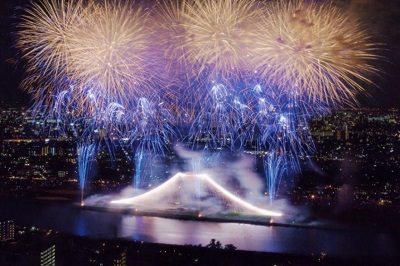
Within the opening five seconds, 1000 fireworks will be set off in a magnificent spectacle. There will be eight differently themed firework displays accompanied by background music, filling the area with electrifying energy.
- Date: 7:15-8:30 pm, Saturday, August 5 (Will be cancelled if fireworks can’t be set off)
- Location: The banks of the Edogawa River / Osu 3-chome, Ichikawa City
- Number of Fireworks: about 14,000
- Access: 【By Train】A 15-minute walk from the South Exit of Ichikawa Station on the JR Sobu Line, or a 20-minute walk from Konodai Station on the Keisei Line
- Contact: Ichikawa Citizen Noryo Fireworks Planning Committee Office (Ichikawa City Tourism Promotion Division) TEL:047-711-1142
Sakura Fireworks Festival 2023 〔Sakura City〕
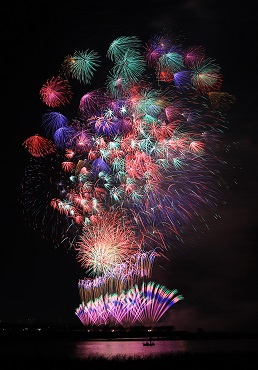
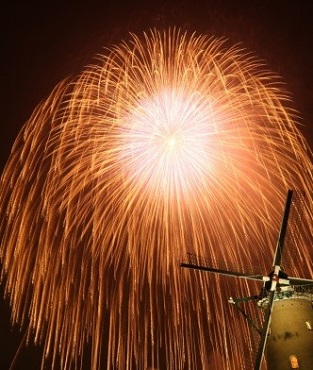
A highly popular event you can’t miss! Once again this year, the centerpiece of the Sakura Fireworks Festival, “Wide Starmine,” will take place with 6000 fireworks set off over a 10-minute period in time with music. Four of Sakura’s famous “nishaku-dama” fireworks will also be launched 500 meters into the air, blooming like large, 500-meter-diameter flowers, in addition to 30 consecutive “shaku-dama” fireworks. The night sky of Sakura will be overflowing with their full, blossoming shapes! Come and enjoy this grand firework display that utilizes the wide-open expanse of Lake Inbanuma to its fullest!
- Date: 7:00-8:30 pm, Saturday, August 5
- Location: The shores of Lake Inbanuma (Sakura Furusato Square and surrounding areas)
- Number of Fireworks: about 18,000
- Admission: Paid seating available (see website for details)
- Access: 【By Train】A 30-minute walk from Keisei Usui Station, or a 40-minute walk from Keisei Sakura Station
- Contact: Sakura City Tourism Association TEL:043-486-6000
- Sakura Fireworks Festival / Sakura City Official Website

Oamishirasato Fireworks 〔Oamishirasato City〕
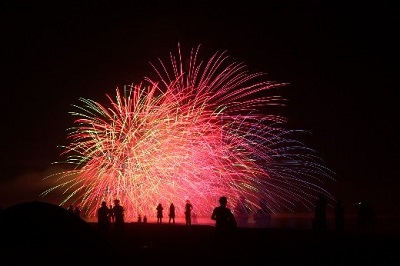
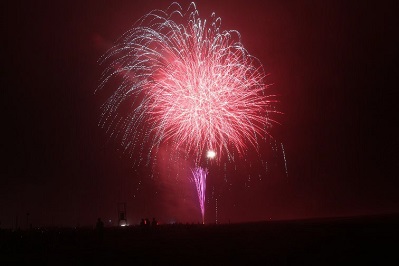
Oamishirasato City’s summer event, the Oamishirasato Fireworks, will be held for the first time in 4 years. It will take place on Shirasato Beach and feature approximately 3000 fireworks, including message fireworks and a starmine firework display. The highlight of the show is the starmine fireworks that will be set off one right after another like flowers in bloom just above the ocean’s surface.
- Date: 7:30 pm, Saturday, July 29 (Rain Date: Friday, August 11 [national holiday])
- Location: Shirasato Beach / 4881-1 Minami-imaizumi, Oamishirasato City
- Admission: Free
- Access: 【By Bus】 From Oami Station on the JR Sotobo Line, take the bus bound for Shirako-shako or Sunrise Kujukuri, get off at the Shirasato Kaigan bus stop, and walk 5 minutes
- 【By Car】 Just off the Shirasato IC of the Kujukuri Toll Road
※Parking is limited, so please use public transportation - Contact: Oamishirasato City Commerce and Tourism Division, Promotion Section TEL:0475-70-0356
- Oamishirasato Fireworks / Oamishirasato City Website

CHIBA 150th ANNIVERSARY Ichinomiya Noryo Fireworks / Ichinomiya Beach〔Ichinomiya Town〕
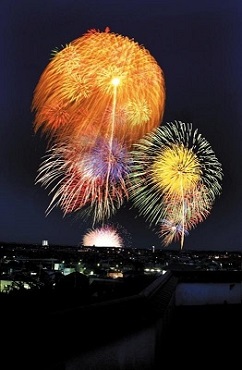
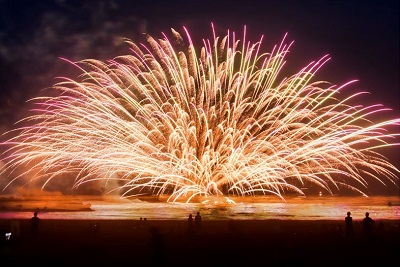
Held for the first time in 4 years, the Ichinomiya Noryo Fireworks will paint the summer night sky with giant fireworks, fireworks set off directly over the ocean water to appear like flower blossoms, and a variety of others.
Watching the fireworks while listening to the sound of the waves along the Kujukuri coastline is a truly special experience. Come to Ichinomiya to see them for yourself!
- Date: 7:10 pm, Saturday, August 5 (Rain Date: Sunday, August 6)
- Location: Ichinomiya Beach / Ichinomiya, Ichinomiya Town, Chosei-gun
- Admission: Free
- Access: 【By Train】 From the Kazusa-Ichinomiya Station East Exit on the JR Sotobo Line, take the free shuttle bus to Ichinomiya Kaigan Hiroba
【By Car】 5 minutes from the Ichinomiya Exit of the Kujukuri Toll Road - Contact: Ichinomiya Town Tourism Association TEL:0475-42-1425
- Ichinomiya Tourism Association

Chiba Prefecture 150th Anniversary Project Sammu Summer Carnival / Hasunuma Seaside Park Observation Tower Square 〔Sammu City〕
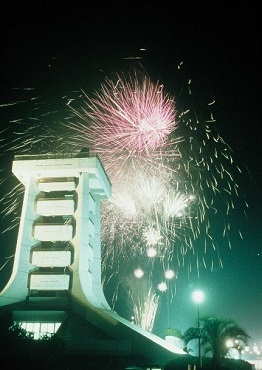
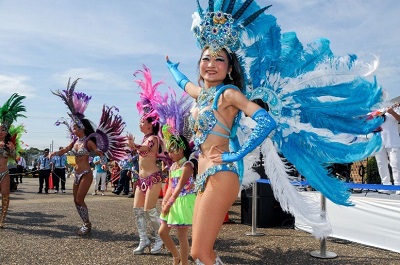
This lively carnival will have a samba parade and a variety of festival stalls, and the finale of the event will be the fireworks that paint the night sky along the coast.
- Date: 2:00 pm, Saturday, July 29 (Rain Date: Sunday, July 30)
※Fireworks to be set off from 7:30 pm
※Start time subject to change depending on weather conditions
- Location: Hasunuma Seaside Park Observation Tower Square / 368-1 Ho, Hasunuma, Sammu City
- Number of Fireworks: about 2,000
- Admission: Free
- Access: 【By Train】From Yokoshiba Station on the JR Sobu Main Line, take the Chiba Kotsu Hasunuma Loop Bus to the Minamihama Kaigan bus stop and walk 5 minutes
- Contact: Sammu Summer Carnival Planning Committee Office (Sammu City Commerce and Tourism Division) TEL:0475-80-1202
- Sammu City Website

2)Narita Eel Festival 〔Narita City〕
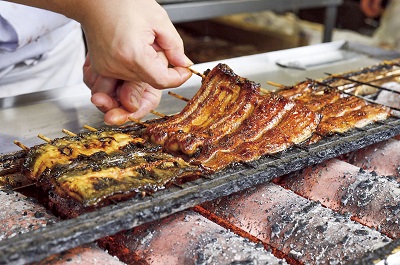 。
。
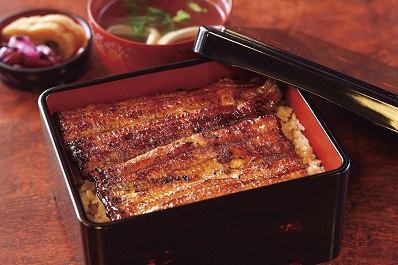
Blessed with the fishing waters of Lake Inbanuma, Narita City has been serving eel to visitors of Naritasan Shinshoji Temple since the Edo Period (1603-1868). At a distance of 800 meters and about a 15-minute walk, Naritasan Omotesando Street is lined with historic, traditional Japanese inns and restaurants. Many restaurants along this street and within the city have eel dishes on their menus. An area with such a high concentration of eel restaurants is rare within Japan, and this had led Narita to earn the nickname “Eel City.”
During the Narita Eel Festival from mid-July to late August, more than 100 restaurants, souvenir shops, and accommodation facilities participate in a stamp rally every year, and participants can earn wonderful prizes that are available only in Narita. Please take this chance to enjoy walking around Omotesando Street and taking a look at all the shops!
- Duration: Friday, July 14 to Monday, August 28
- Location: Participating shops in and around Narita City, mainly the Naritasan Shinshoji Temple Omotesando Street and Lake Inbanuma areas
- Access: 【By Train】 Around JR Narita and Keisei Narita Stations
- Contact: Narita City Tourism Association TEL:0476-22-2102
- Narita Eel Festival/Official Website for Narita City Tourism Association

3)Yaegaki Shrine Gion Festival 〔Sosa City〕
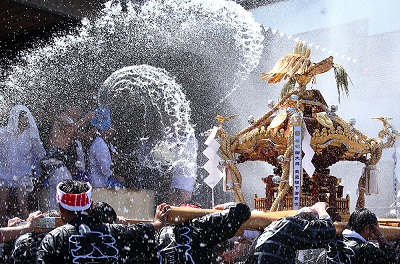
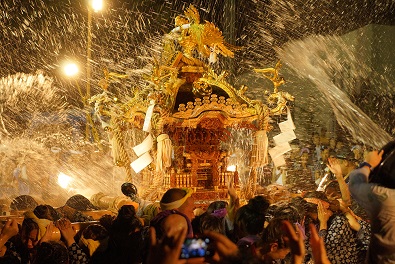
At the Yaegaki Shrine Gion Festival held every year from August 4-5, as many as 20 “mikoshi,” or portable shrines, are brought out from 10 neighborhoods to gather around the Yaegaki Shrine area. These mikoshi are carried on the shoulders of festival goers in a unique style, accompanied by the lively festival music of flutes and taiko drums. The sight of the festival procession combined with the spirited shouts of “anrya-doshita” is enough to make the hearts dance of everyone watching. Another feature of this festival is that cold water is thrown over the procession of mikoshi. Some sites have trucks filled to the brim with water that is then sprayed in a downpour, creating an extraordinary spectacle.
The old custom that prohibited women from carrying mikoshi has been relaxed at this festival. This allows for mikoshi that are carried only by women, a rarity within Japan. Determined to not be outdone by the men, 10 mikoshi from each neighborhood will be carried by groups of high-spirited women on the evening of Friday, August 4. The highlight of the festival is the joint procession on the morning of Saturday, August 5, in which around 20 mikoshi and accompanying musical groups gather at Yokaichiba Elementary School and parade throughout the town in a continuous line. As they eventually reach Yaegaki Shrine one after the other in the evening, the excitement reaches its peak and the revelers put their full energy and strength into the festivities.
- Duration: Friday, August 4 (7 am-10 pm) and Saturday, August 5 (10 am-10 pm)
- Location: Yaegaki Shrine / 2939 I, Yokaichiba, Sosa City
- Access: 【By Train】A 5-minute walk from Yokaichiba Station on the JR Sobu Main Line
- Contact: Sosa City Commerce and Tourism Division TEL:0479-73-0014
4)Sawara Grand Summer Festival 〔Katori City〕
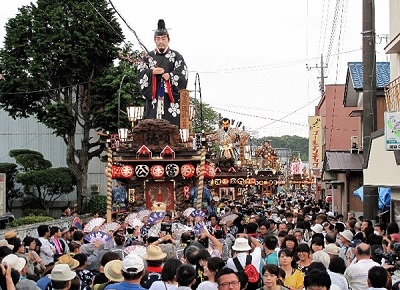
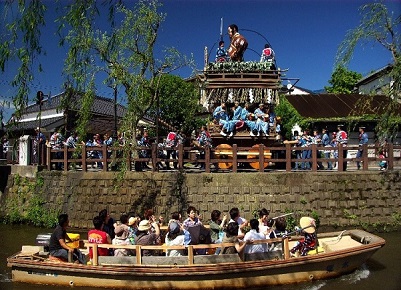
Held in both summer and autumn, the Sawara Grand Festival is designated as an Important Intangible Folk Culture Property of Japan.
At Yasaka Shrine’s Gion Festival held in July, a total of 10 festival floats are gallantly pulled about to the melodies of “Sawara-bayashi,” one of the three main festival music styles of Japan.
The floats graze the eaves of the houses within Sawara’s Important Preservation District for Groups of Traditional Buildings as they go by, their appearance creating an exquisite atmosphere. They are embellished by large dolls and extravagant Kanto wooden carvings, highly treasured as Cultural Properties of Japan. The dolls are among the largest in Japan and were created by doll makers in the Edo and Meiji periods.
The highlight of the festival is the float maneuvers, such as the “no-no-ji-mawashi” in which the young festival participants turn the float in the shape of the Japanese hiragana character “no,” putting their power and skill on full display as the entire area is filled with excitement.
- Date: Friday, July 14 to Sunday, July 16, 10:00 am-10:00 pm
- Location: Honjuku district (around Yasaka Shrine) / Sawara, Katori City
- Access: 【By Train】 A 10-minute walk from Sawara Station on the JR Narita Line
※ Event parking will be available near the banks of the Tone River, with shuttle buses and boats running from the parking lot to the festival (for a fee) - Contact: Katori City Commerce and Tourism Division TEL:0478-54-1111, Suigo-Sawara Tourism Association TEL:0478-52-6675
5) Yatsurugi Hachiman Shrine Annual Festival 〔Kisarazu City〕
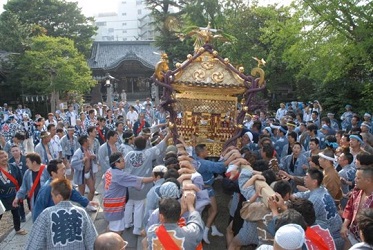
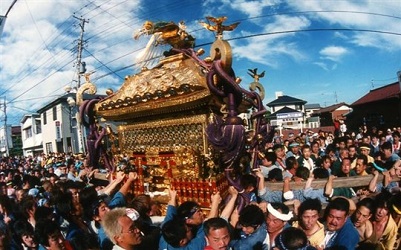
The Yatsurugi Hachiman Jinja Goreisai (Yatsurugi Hachiman Shrine Annual Festival) is a quintessential summer festival, known locally as “Hachiman-sama no Machi” (Hachiman’s Festival). Hachiman is the god of war and warriors and is one of the most well-known Shinto deities of Japan. The highlight of the festival is the procession of the 1.5-ton “o-mikoshi,” a large portable shrine that is carried around on poles. It has a long history dating back to when it was built in Year 3 of the Kaei Era (1850) and is considered one of the three major mikoshi of the Kanto region.
The festival reaches its climax when the strong, youthful revelers from each neighborhood lift up the mikoshi that enshrines the god on their shoulders and energetically march throughout the area. Additionally, the traditional festival music “Kisarazu-bayashi” that will be played is designated as an Intangible Cultural Asset of Chiba Prefecture.
- Date: Friday, July 14 (main shrine festival)
Saturday, July 15 and Sunday, July 16 (mikoshi procession) - Location:Yatsurugi Hachiman Shrine / 1-6-15 Fujimi, Kisarazu City
- Admission:Free
- Access:【By Train】A 6-minute walk from Kisarazu Station on the JR Uchibo Line
- Contact:Yatsurugi Hachiman Shrine TEL:0438-23-8881
6) The 59th Minamiboso Shirahama Ama Festival x Revitalization Support Event Maruguru ’23 in Minamiboso〔Minamiboso City〕
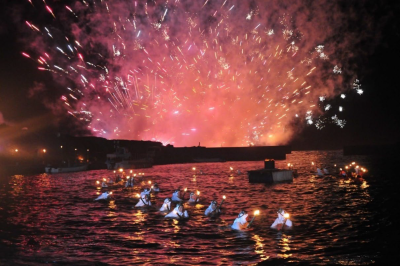
The Shirahama Ama Festival signals the arrival of summer in Minamiboso. “Ama,” which literally translates to “sea women,” are Japanese women divers who have long-standing traditions of free diving to gather seafood and collect pearl oysters from the ocean floor. This festival is held every summer to honor the women in the fishing industry, to pass down the traditions of ama divers, and to pray for their safety and a bountiful catch for the year. The biggest highlight of the festival is the “Ama-no-Daiyaei” (Ama Diver’s Night Swim) in which about 100 ama divers dressed in white enter the ocean together with torches in hand, creating a scene straight out of a world of fantasy.
This festival will be held for the first time in 4 years and will include a variety of festivities in addition to the main Ama-no-Daiyaei event, such as a ceremony to pray for a safe and plentiful catch from the sea; performances of the folk song Shirahama Ondo, “Ryujin-no-Mai” dragon dance, and folk group dances; and fireworks. The Revitalization Support Event Maruguru ’23 in Minamiboso will also be held at the same time.
- Date: Saturday, July 15 and Sunday, July 16, 11:00 am-9:00 pm
- Location: Nojimasaki Lighthouse Plaza / 630 Shirahama, Shirahama-cho, Minamiboso City
- Access: 【By Train】 From Tateyama Station on the JR Uchibo Line, take the bus bound for Awa Shirahama to the Nojimasaki Todai-guchi bus stop and walk 5 minutes
【By Car】 About 35 minutes (19 kilometers) from the Futtsu Interchange (IC) on the Futtsu-Tateyama Road - Shirahama Ama Festival Website

- Contact: Ama Festival Planning Committee (Minamiboso City Tourism Association Chikura Branch Office) TEL:0470-44-3581
